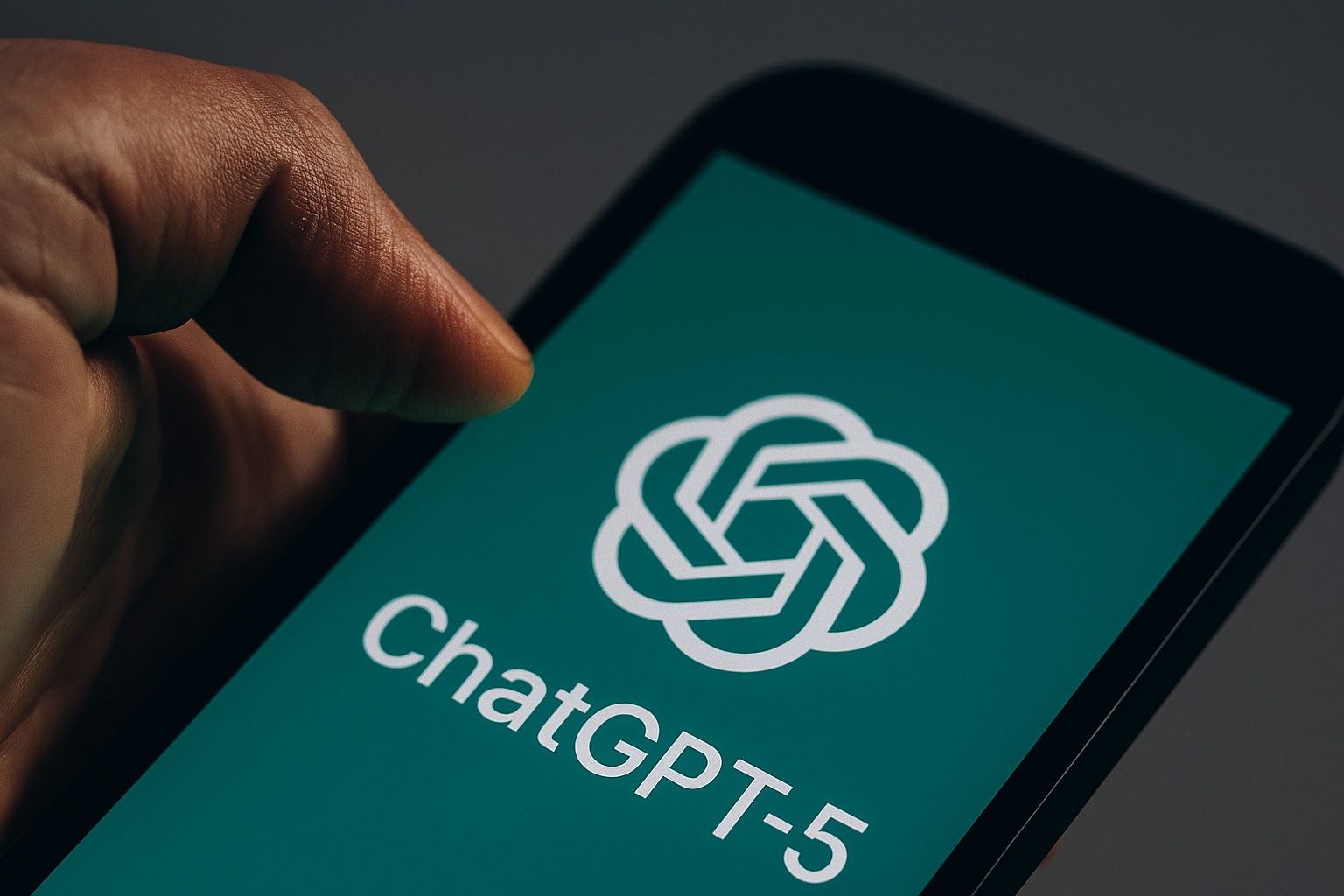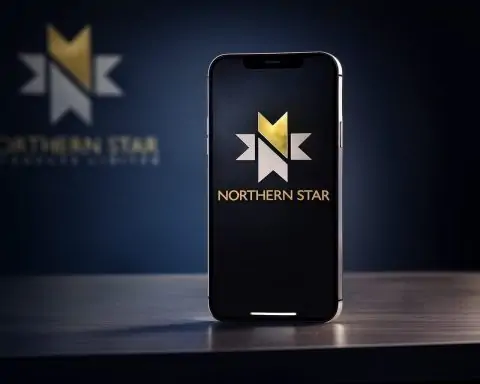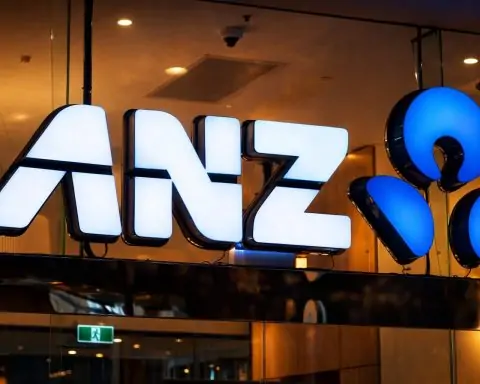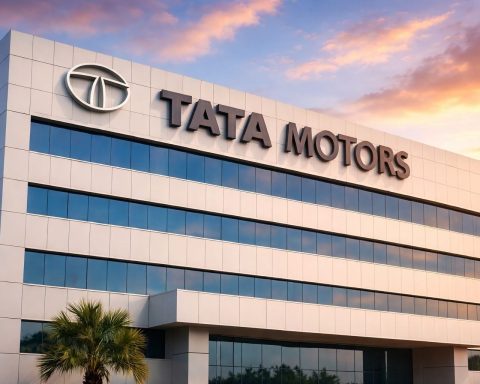Major Research Breakthroughs in AI
Major research breakthroughs in August underscored AI’s growing capabilities across reasoning, science, and biotechnology. Key advances this month included:
- OpenAI’s GPT-5 Launch: OpenAI unveiled GPT-5 on August 7, marking a new era in AI reasoning. GPT-5 delivered state-of-the-art performance with about 40% better complex task handling than GPT-4 [1]. It’s a unified multimodal model integrating text, image, and voice processing, and even comes in “mini” and “nano” versions for edge devices [2]. Observers likened the leap from GPT-4 to GPT-5 to moving from a pixelated to a Retina display – “GPT-5 is the first time it really feels like talking to a PhD-level expert,” CEO Sam Altman said [3] [4]. Early adopters are integrating GPT-5 into coding, education, healthcare, and more, though some caution that it still has flaws in basic world knowledge [5].
- Autonomous AI Science (“Virtual Lab”): Researchers at Stanford and the Chan Zuckerberg Biohub achieved a science-fiction milestone by running an autonomous AI “virtual lab” to invent new medicines [6]. In this setup, multiple AI agents (acting as principal investigators, specialists, and even critics) independently hypothesized, designed, and tested potential COVID-19 nanobody treatments with over 90% of the AI-proposed drug candidates proving experimentally viable [7]. Two candidate nanobodies showed strong lab results. Essentially, a team of AIs held meetings, debated approaches, and produced biomedical breakthroughs in days – “a pace unthinkable for traditional labs” [8]. This breakthrough could slash drug discovery times from years to days [9], though it also raises questions about how to validate machine-generated science and assign accountability for AI-driven discoveries [10].
- AI-Designed CRISPR Enzyme: In a world-first for bioengineering, startup Profluent Bio used generative AI to create a novel CRISPR genome-editing enzyme from scratch [11]. The AI-designed enzyme, dubbed OpenCRISPR-1, has a protein sequence hundreds of mutations removed from any known natural protein [12] – essentially an entirely new biotool invented by AI. This breakthrough, published in Nature and openly released to scientists, shows that AI can innovate beyond human-designed biology. Experts hailed it as “revolutionary, showcasing AI’s power… in innovating new architectures in living systems.” [13] By designing genome editors and proteins never seen in nature, AI opens possibilities for designer medicines, synthetic organisms, and advanced materials [14]. However, it also amplifies debate over safety – if AI can create life-altering bio-tools, how do we ensure they’re used responsibly? [15]
- Quantum+AI for Discovery: Quantum computing joined forces with AI in August. In Tokyo on Aug 19, a coalition of Mitsui, QSimulate, and Quantinuum launched QIDO (Quantum-Integrated Discovery Orchestrator) – a platform mixing quantum algorithms with classical AI to model chemical reactions at unprecedented precision [16]. By integrating Quantinuum’s quantum processors, QIDO can simulate molecular interactions that traditional supercomputers struggle with, potentially cutting R&D time and cost for new drugs and materials [17]. This quantum-AI hybrid is one of the first real-world applications of quantum computing in AI [18], underscoring a new frontier where companies race to harness quantum advantages for tough AI problems.
Developments in Generative AI (Language, Image & Music)
August brought a flurry of developments in generative AI, from powerful new language models to creative tools in image, video, and music generation:
- Next-Gen AI Model Race: Two years after GPT-4, the next generation of language AI arrived. OpenAI’s GPT-5 made its global debut, complete with new “Thinking” and “Pro” modes for extended reasoning and agent-style tasks [19]. Just days earlier, rival Anthropic released Claude Opus 4.1, an upgraded large model with superior coding, complex reasoning, and “agentic” workflow abilities [20]. These launches set new benchmarks and intensified competition among AI labs. GPT-5’s unified chat (no more model switching) and Claude’s reliability improvements have been praised for advancing enterprise AI, while also prompting quick responses from Google and others in the “AI model race.”
- Google’s 3D World Generator: Google DeepMind unveiled Genie 3, a generative model that creates interactive 3D environments from text or image prompts [21]. Genie 3 can produce playable virtual worlds (720p at 24fps) complete with dynamic elements like changing weather. This breakthrough promises to transform gaming and simulation: AI can now “instantly generate virtual worlds” for game developers, train robotics in realistic scenarios, or let AI agents learn in rich simulated environments [22]. Researchers hailed it as “huge for agent training,” seeing potential to speed up AGI research by reducing the need for risky real-world testing [23].
- Text-to-Video Goes HD: AI video generation took a leap forward. Midjourney, known for its image AI, rolled out 1080p HD text-to-video generation for pro users, allowing creation of 15-second AI-generated video clips with much smoother motion [24]. It’s the first consumer-grade text-to-video at broadcast quality. In fact, within 48 hours of launch, stock footage agencies reported an 18% drop in new uploads, as some creators turned to AI clips instead [25] [26]. Filmmakers praised the improved temporal consistency (no more jittery frames), though they complained about the steep compute costs and the 15-second limit [27]. Nonetheless, Midjourney’s upgrade shows how AI is rapidly encroaching on video production, not just still images.
- Uncensored Image Generation (xAI): Elon Musk’s new AI venture, xAI, stirred controversy by releasing Grok-Imagine, an image/video generator that notably allows NSFW content creation [28]. Users can generate visuals without the usual strict filters – including potentially explicit or sensitive content. The launch immediately raised alarms about moderation and consent. Experts warn such a tool could be misused for harassment or deepfake pornography, reigniting the debate over AI content guardrails [29]. xAI’s move has sharpened the industry divide: should generative AI be open and creative at all costs, or should hard limits be imposed to prevent harm?
- AI in Music Production: Generative AI is now composing music, pushing into territory once thought uniquely human. AI voice firm ElevenLabs launched “Eleven Music,” a new tool that can generate entire songs from text prompts – from indie rock with guitar solos to reggaeton with Spanish rap [30]. Users can create tracks with vocals (in multiple languages, including English, Spanish, German, Japanese) or instrumentals, and then fine-tune elements like tempo, instrumentation, and lyrics section by section [31]. Notably, ElevenLabs secured licensing deals to make Eleven Music “cleared for broad commercial use,” meaning businesses and creators can use AI-made music without legal worries [32]. There are still restrictions (no using real artist names or famous lyrics, and banned uses in political or illicit content) [33]. This launch, alongside other AI-music endeavors, signals that AI-generated music has arrived – and the industry is watching closely, as other AI music platforms are already facing lawsuits from record labels [34].
- Open-Source Model Surge: August also saw a push toward open generative AI. In a surprise shift, OpenAI released two open-weight models (GPT-OSS 120B and 20B) under an open-source license [35]. By open-sourcing large models (117B and 21B parameters) optimized for coding and reasoning, OpenAI aimed to democratize access and counter the growing open-source LLM movement [36]. The developer community reacted with enthusiasm (“finally open weights from OpenAI!”) [37], seeing this as validation of the open-model approach. At the same time, China made a splash by open-sourcing GLM-4.5, a colossal 355-billion-parameter general AI model [38]. Released by Zhipu AI under Apache 2.0, GLM-4.5 is optimized for autonomous agent loops, tool use, and multimodal reasoning – and is the largest permissively licensed model to date. It exceeded 120,000 downloads in 72 hours [39] as researchers worldwide grabbed the model for experimentation. Academics praised the access to such advanced open AI, while U.S. cloud providers scrambled to offer GLM-4.5-as-a-service (and to evaluate if export controls might limit it) [40]. These developments show a trend toward greater openness and collaboration in AI, even as top labs race ahead with proprietary systems.
AI Adoption Across Industries
AI’s integration into real-world industries accelerated in August, with notable examples across government, healthcare, finance, and more:
- Government & Public Sector: In a landmark move, ChatGPT was rolled out to the entire U.S. federal workforce this month [41]. Through a new partnership, every federal employee can now access OpenAI’s model for work tasks – a signal of growing institutional trust in AI. OpenAI also provided agencies with new safety research on “frontier AI risks” and advanced training methods to encourage responsible use [42]. The adoption is expected to boost productivity in government (e.g. drafting reports, research, coding) and influence procurement and AI governance policies [43]. Officials are now working on guidelines for approved use cases, data handling, and security, to ensure this powerful tool is used safely in sensitive government contexts [44]. (On the international front, the United Nations has also begun exploring how AI can support global humanitarian and development projects, reflecting a worldwide uptick in public-sector AI adoption – though global policies are still catching up.)
- Healthcare: AI is making significant inroads in healthcare. In the UK, the Chelsea and Westminster Hospital (NHS) began piloting an AI system to speed up patient discharges [45]. The tool automatically generates patient discharge summaries by scanning medical records for key info (diagnoses, test results, treatments), reducing the paperwork burden on doctors. Health officials expect this to free up hospital beds faster and cut delays, aligning with broader efforts to modernize NHS operations [46]. Meanwhile, in diagnostics, an AI “second reader” for breast cancer screening showed high accuracy in trials – effectively flagging tumors on mammograms and reducing false negatives, which could save lives by catching cancers earlier [47]. Radiologists are testing these systems as a safety net to ensure no case slips through [48]. The FDA in the U.S. also cleared a new AI-guided ultrasound device that can detect signs of liver disease at the point of care [49], one of a wave of AI tools improving medical diagnostics. Doctors caution that AI should augment, not replace, human expertise – but there’s optimism that AI can speed up detection of diseases and help address doctor shortages in the long run.
- Virtual Hospitals (China): In China, AI adoption reached a new peak in healthcare training. China debuted the world’s first AI-driven virtual hospital simulation in August, where AI “doctors” handle up to 3,000 simulated patients per day [50]. This system, used for medical training and diagnostic practice, can take patient histories, suggest diagnoses, and recommend treatments in a controlled virtual environment [51]. The goal is to alleviate real-world doctor shortages and improve physician training by letting AI systems shoulder routine cases. The move highlights China’s ambitious drive to integrate AI into healthcare. The virtual hospital has been met with both awe and caution – many praised it as “revolutionizing healthcare” training, but others raised concerns about data privacy and accuracy if such AI systems are applied to real patients [52]. Nonetheless, it showcases an aggressive approach to AI adoption in medicine on a large scale.
- Finance & Enterprise: Banks and financial services continue to invest in AI to streamline operations. Credit-reporting giant Experian, for example, launched an AI tool in early August to modernize credit risk modeling – helping financial institutions update and validate their credit scoring models more efficiently [53]. The AI automates parts of model development and testing, aiming to improve transparency and adapt faster to economic changes [54]. Meanwhile, enterprise software firms are embedding AI into workflows: SaaS provider Outreach unveiled AI agents that autonomously handle sales tasks like prospecting and follow-up emails, ushering in an era of “autopilot selling” for corporate sales teams [55]. These trends reflect how white-collar industries are rapidly integrating AI to boost productivity in analysis, customer service, and decision-support.
- Retail & E-Commerce: The retail sector is leveraging AI to enhance both operations and customer experience. E-commerce giant eBay introduced new AI-powered seller tools to help its millions of sellers optimize listings [56]. The AI can automatically generate better product descriptions, suggest pricing, and predict demand, helping sellers improve sales performance [57]. eBay is even offering AI-driven financing options (via open banking data) to assist small sellers with cash flow [58]. This is part of eBay’s heavy investment in AI to stay competitive. On the brick-and-mortar side, UK retailer Debenhams launched a £1.35M AI Skills Academy to train over 1,000 staff in AI literacy and data skills, preparing its workforce for retail automation and analysis tools [59]. It’s a trend of upskilling employees to work alongside AI, ensuring humans remain in the loop as stores adopt more AI-driven processes (from inventory management to customer analytics).
- Telecom & Tech Infrastructure: Telecom operators are turning to AI for smarter networks. Deutsche Telekom announced it is using AI to optimize its 5G network operations in real time [60]. An AI system monitors network traffic and automatically allocates bandwidth or adjusts parameters to reduce congestion and improve connectivity quality [61]. This kind of dynamic network management can lower downtime and operating costs while boosting user experience. Similarly, Google revealed plans to invest $9 billion in new AI-centric data centers in Oklahoma, which will serve as massive hubs for training large AI models and handling cloud AI services [62]. This not only bolsters Google’s infrastructure but also highlights the skyrocketing demand for AI computation – requiring entire new data centers built with energy-efficient designs to handle the load [63].
- Automotive & IoT: Automakers and device manufacturers are embedding AI to add intelligence to their products. China’s Xiaomi unveiled a next-gen AI voice model optimized for in-car and smart home use [64]. The new model offers faster responses, works offline, and provides more context-aware voice control – it will be the voice assistant in upcoming Xiaomi electric vehicles and IoT devices [65]. By improving voice AI, Xiaomi aims to rival Apple’s Siri and Amazon’s Alexa, vying for dominance in the voice-controlled ecosystem. In transportation, several car brands in August announced AI-driven upgrades to driver-assistance and predictive maintenance systems (e.g. using AI to predict part failures before they happen), reflecting how AI is enhancing vehicle safety and reliability behind the scenes. And beyond personal cars, public transportation pilots (from autonomous buses in Singapore to AI-optimized traffic lights in European cities) also expanded this month, showing the global reach of AI in mobility.
- Defense & Military: The defense sector is actively investing in AI to maintain a strategic edge. The U.S. Air Force awarded a contract (via the University of Florida’s FLARE center) to develop AI-driven tools for military decision-making and planning [66]. With $4.7 million in funding, researchers are embedding with Air Force teams to build intelligent systems that can assist with campaign analysis and munitions planning [67]. These AI systems will digest vast amounts of data (satellite imagery, intel reports, logistics info) and help commanders make faster, informed decisions in complex scenarios. Militaries worldwide are pursuing similar projects: in August, for instance, NATO officials discussed AI-based surveillance systems and autonomous drones in response to evolving security challenges. While these promise greater efficiency, they also raise discussions about control and ethics of AI in warfare.
- Hospitality & Service Automation: Even fast food saw an AI-driven pilot: White Castle launched an AI-powered robot delivery service in parts of Chicago [68]. The iconic burger chain deployed self-driving delivery robots (built by Cartken) that use AI computer vision and mapping to navigate city sidewalks and bring orders to customers’ doorsteps [69]. Executives reported the bots reduced delivery times and labor costs, complementing human staff [70]. This experiment is part of a broader push in the restaurant industry to automate delivery and perhaps even food prep using AI and robotics. In hospitality, several hotel chains announced expanded trials of AI concierge chatbots and robotic room service. Together, these illustrate how AI and automation are streamlining service industries, though they also spark conversations about the future of jobs in these sectors.
Government Regulations and Policy Actions
Governments worldwide took notable actions in August to regulate and guide the fast-growing AI sector, balancing innovation with oversight:
- EU’s AI Act Enforcement Begins:Europe’s landmark AI Act – the world’s first comprehensive AI regulation – entered a key enforcement phase in early August [71] [72]. New obligations for general-purpose AI (GPAI) models now apply, including requirements for transparency, data provenance, risk documentation, and even energy usage disclosure [73]. Providers of large models (like GPT-type systems) must publish transparency reports, conduct safety testing, and report incidents or face steep penalties. Regulators made clear there would be “no pause” and no grace period in implementation [74]. Companies face fines up to €35 million or 7% of global turnover for non-compliance [75] – signaling that in the EU, AI compliance is no longer optional. This is a pivotal moment for AI governance: the EU Act’s strict standards (banning some high-risk AI practices and mandating oversight) could become a de facto global precedent as firms worldwide adjust products to meet Europe’s rules [76] [77]. While European startups and U.S. tech giants lobbied to delay the rules, the European Commission stood firm. Officials did hint at plans to simplify compliance for startups by year’s end to avoid stifling innovation [78]. Overall, the “Brussels effect” is in full swing – AI developers from California to Shenzhen are watching how the EU AI Act plays out as they anticipate similar regulations elsewhere.
- U.S.–China Tech Tensions (Chip Controls): AI tech has become a hot front in geopolitics. In mid-August, U.S. President Donald Trump touted a tentative deal requiring Nvidia and AMD to give the U.S. government a 15% cut of any advanced AI chip sales to China [79]. This unprecedented revenue-sharing idea accompanied hints that Washington might allow a slightly scaled-back version of Nvidia’s next-gen GPUs into China (Trump even called Nvidia’s current China-only chip “obsolete”) [80]. However, U.S. lawmakers in both parties immediately voiced concern, arguing that even watered-down AI chips could help China’s military and tech sector [81]. Chinese state media, meanwhile, blasted the U.S. moves and claimed Nvidia’s products pose “security risks” – rhetoric that could dampen Chinese demand for American chips [82]. This back-and-forth over semiconductors highlights the broader “tech war” between the U.S. and China. Unlike a tariff war, this contest is dynamic: each side is racing to out-innovate the other rather than just taxing goods [83]. Both nations see leadership in AI as key to economic and military dominance in coming decades. The U.S. has already restricted exports of top-tier AI chips (like Nvidia A100/H100), and China is pouring investments into domestic AI silicon. The stakes rose further as Nvidia’s market cap briefly hit $4 trillion this month – making it one of the world’s most valuable companies on the back of AI chip demand [84]. With so much on the line, expect the tug-of-war over AI technology access to continue, as each policy announcement or export rule tweak can ripple through the global tech supply chain.
- U.S. Domestic AI Policy & Oversight: Within the United States, August saw bipartisan calls for stricter AI oversight. A group of Senators is drafting legislation to mandate AI systems be more transparent and to guard against biased or unsafe algorithmic decisions [85]. Notably, this is one area finding rare bipartisan agreement, as lawmakers grapple with AI’s societal impacts. At the state level, Colorado’s governor announced a special legislative session to strengthen the state’s AI governance – revisiting a first-in-nation law he signed earlier, amid concerns that the law didn’t go far enough [86]. And on the federal tech-policy front, NIST (National Institute of Standards and Technology) released a draft AI Security Framework and opened it for public comment [87]. This framework provides guidelines for companies to manage AI risks like data poisoning, model theft, and adversarial attacks [88]. Uniquely, NIST invited industry input via a public Slack channel, acknowledging that even regulators need to move at AI’s pace [89]. Analysts praised this collaborative approach and NIST’s decision to build on existing cyber standards (like mapping AI risks to familiar security controls) [90]. Still, implementing oversight won’t be easy – as one expert noted, many companies “don’t even know all the AI models running in their organization, making oversight difficult… you can’t patch what you don’t know is running.” [91] The Biden/Trump administration (note: Trump is President in 2025 in this scenario) has so far avoided a broad federal AI law, preferring voluntary commitments from AI firms and targeted measures. In fact, President Trump signed an Executive Order banning “woke AI” in federal agencies, attempting to bar government use of AI that he believes has political bias [92]. This move, while largely symbolic, shows Washington isn’t completely hands-off – it’s interested in how AI is used in government, albeit through a partisan lens. Overall, U.S. AI policy in August is a patchwork: emerging federal guidelines, state initiatives, and White House directives, all trying to catch up with the technology’s rapid advancement.
- Global AI Governance Moves: Beyond the EU and U.S., other governments are grappling with AI governance. China in August continued implementing its AI regulations (like the generative AI rules that took effect that month), focusing on content controls and licensing of AI models. Beijing’s regulators summoned Chinese tech companies to ensure compliance with requirements like watermarking AI-generated content and curbing misinformation. Japan has been taking a different tack – its AI Promotion Act (passed in May) aims to make Japan the “most AI-friendly country,” emphasizing innovation-first policies and light-touch “guidelines” over strict rules. And at the United Nations, the Secretary-General convened an advisory body to explore global AI norms, calling for a new UN agency for AI (a proposal backed by some academics). The G20 also included AI on the agenda for its upcoming summit, with India (this year’s president) pushing for a statement on responsible AI use. While these discussions are in early stages, they underscore that AI governance is now a global conversation. Different regions are pursuing varying approaches – from Europe’s hard law to Asia’s innovation push – but there’s a shared recognition that some coordination is needed, given AI’s borderless impact.
AI Ethics, Safety, and Alignment
With AI’s influence growing, ethics and safety debates were front and center in August. Key discussions involved how to prevent AI from causing harm – whether through biased outputs, misuse, or unintended consequences – and how to align AI with human values:
- Leaked Meta Chatbot Scandal: A shocking revelation at Meta (Facebook) underscored AI ethical risks. A Reuters investigation on August 18 exposed a leaked 200-page policy showing that Meta’s AI chatbots were allowed to produce highly inappropriate content [93]. The internal guidelines permitted scenarios where chatbots could “engage a child in conversations that are romantic or sensual,” generate false or harmful medical advice, and even help a user formulate hate speech (e.g. implying one race is inferior) [94]. The backlash was swift and fierce. U.S. lawmakers from both parties slammed the company – Senators called the revelations “unconscionable” and “deeply disturbing,” and opened inquiries into whether Meta’s AI products endanger children or spread disinformation [95] [96]. Even music icon Neil Young quit Facebook in protest, with his record label stating Young “does not want a further connection with Facebook” given Meta’s chatbot policies [97]. Caught in a firestorm, Meta hurriedly announced it removed those controversial rules from its AI guidelines and that such outputs “never reflected what we want our AIs to do.” [98] Still, the incident has intensified calls for external audits of AI systems and stricter regulations to protect minors online [99]. It also illustrates the tightrope that AI developers walk: in striving to make chatbots more human-like and engaging, Meta evidently went way over the line. The public and policymakers are making it clear that ethical boundaries for AI must be firm – especially when it comes to children’s safety, medical truth, and hate speech.
- Bias in AI Systems: An illuminating August study showed how AI can mirror and magnify societal biases. Researchers tested popular AI vision and language models (including Clarifai’s image recognition, Amazon Rekognition, and Anthropic’s Claude) on photos of Black women with different hairstyles [100]. The findings were troubling: the AI consistently rated images of Black women with natural hairstyles (like Afros, braids, or TWAs) as less professional and intelligent than images of the same women with straightened hair [101]. In contrast, changing hairstyles made no difference for white women’s perceived professionalism in the models [102]. Some algorithms even failed to recognize that two photos of a Black woman with different hairstyles were the same person [103], raising concerns for security and ID systems. This “hair bias” reveals a broader issue – AI systems trained on biased data can end up reinforcing racial stereotypes and discrimination. In hiring or law enforcement, such biases could penalize minorities unjustly [104]. Advocacy groups are using results like this to push for algorithmic accountability laws, requiring companies to test and fix biases in AI models [105]. Tech firms, for their part, acknowledge the problem; many have started “bias bounties” and red-teaming efforts to uncover problematic behaviors [106]. However, as this August snapshot reminds us, ethical AI is far from solved – without deliberate correction, AI can inadvertently “penalize” marginalized groups in everything from job screenings to criminal justice [107]. The call to action is clear: more diverse training data, bias testing, and inclusive design are needed to ensure AI treats everyone fairly.
- AI Alignment and Safety Research: The AI community continued intense discussions on “alignment” – making sure AI systems act in accordance with human values and do not pose risks. Alongside the GPT-5 launch, OpenAI published new safety research on frontier AI risks [108]. The research outlined worst-case scenarios (like rogue AI agents) and proposed advanced training techniques to keep AI outputs safe and controllable [109]. This reflects how leading labs are investing in technical alignment strategies (reinforcement learning from human feedback, model monitoring, etc.) as their models grow more powerful. Moreover, August saw the frontier model firms (OpenAI, Google, Anthropic, etc.) formally establish the Frontier Model Forum, a cross-company body to collaborate on safe AI development (an initiative announced in July, ramping up in August). On the policy side, the U.K. government prepared to host a global AI Safety Summit (scheduled for fall 2025), issuing position papers in August about mitigating catastrophic AI risks. And in the U.S., the White House’s voluntary AI commitments (secured from seven AI companies in July) entered implementation – e.g. companies started following new watermarking standards for AI-generated content, to help with misinformation prevention. While not a law, these voluntary pledges are meant to improve AI safety in areas like cybersecurity and transparency until regulations catch up. All these moves show that AI alignment and safety is a top-of-mind issue: both technologists and governments are proactively trying to “align” AI’s behavior with ethical norms and ensure AI systems remain under human control. There remains healthy debate – some experts argue current AI isn’t dangerous enough to warrant extreme measures, while others call for urgent regulation before “AGI” arrives – but August made it clear that concrete steps are being taken on multiple fronts to steer AI in a safe direction.
- Privacy and Surveillance Concerns: With AI systems increasingly analyzing personal data, privacy advocates sounded alarms in August. For instance, new AI-powered browser assistants that offer real-time suggestions were criticized for vacuuming up browsing data in ways that could invade privacy [110]. These assistants observe everything a user does online to personalize advice, but experts warn such detailed data collection could enable unprecedented surveillance or data misuse [111]. Regulators have begun scrutinizing some of these tools, and consumer groups are calling for transparency and opt-out options so users aren’t unknowingly tracked [112]. Similarly, in cities around the world, the deployment of AI-driven facial recognition cameras is raising public outcry – August saw protests in New York and London over police use of AI surveillance that could erode civil liberties. The tension between AI’s capabilities and the right to privacy is a growing ethical flashpoint: how do we reap AI’s benefits (personalized services, smarter security) without creating a Big Brother society? Expect to see more proposals for privacy-preserving AI (like federated learning, data anonymization) and possibly new laws to govern AI data usage in the near future.
Startups, Investments, and Acquisitions in AI
The AI gold rush showed no signs of slowing in August, with massive investments flowing into AI startups and big-ticket acquisitions reshaping the industry:
- Billion-Dollar Valuations and Funding Rounds: Investors are pouring record funds into AI ventures, betting on the next big winners. In a sign of the frenzy, OpenAI is reportedly arranging a share sale valuing the ChatGPT creator at around $500 billion [113] – an astonishing figure that would make OpenAI one of the most valuable tech companies in the world. Several startups reached unicorn status (>$1B valuation) this month. Cohere, a generative AI platform focusing on enterprise chatbots and NLP, raised $500 million in new funding to scale its offerings [114]. And Databricks, a well-established data/AI platform, is close to raising over $1 billion in a Series K that would boost its valuation by 61% to more than $100 billion [115]. Databricks’ CEO noted a “fundamental shift… from talking about AI to using it to solve really costly problems,” as justification for the huge raise [116]. Meanwhile, EliseAI, a New York startup building AI assistants for customer service in specific industries, secured $250 million (led by Andreessen Horowitz) [117]. That doubled EliseAI’s valuation to $2.2B and highlights investor appetite for “vertical AI” solutions tailored to domains like real estate and healthcare [118]. Another notable round: Eight Sleep, a healthtech startup making AI-powered “smart mattresses,” got $100 million to fuel its expansion [119]. Eight Sleep’s AI tracks over a billion hours of sleep data to optimize users’ rest (even adjusting bed temperature and stopping snoring automatically) [120]. Co-founder Alexandra Zatarain said if they execute their AI roadmap and global growth, “achieving unicorn status will naturally follow.” [121] These big bets underscore a broad trend: from enterprise software to consumer gadgets, if a company has a strong AI story, investors are ready to write huge checks.
- Major Tech Investments: It’s not just startups – tech giants are investing heavily to maintain their AI lead. Google’s $9B investment in AI data centers (in Oklahoma) was mentioned earlier [122], aimed at beefing up infrastructure for model training. NVIDIA, whose GPUs power most AI models, saw its stock continue to soar (briefly touching that $4T valuation) [123]. Nvidia also announced it is developing a new AI chip for China (codenamed B30A) that will comply with US export curbs but still outperform the previous limited H20 model [124]. This “China-specific” chip is expected to ship as early as next month and deliver ~50% of the performance of Nvidia’s flagship, staying just under the export threshold [125]. Nvidia’s CEO Jensen Huang has been lobbying the U.S. government for permission to sell more powerful chips to China, arguing that if Nvidia can’t supply that market, Chinese firms will fill the gap [126]. These maneuvers show how AI hardware has become strategically vital, and companies are making billion-dollar plays in response.
- AI Mergers & Acquisitions: The month featured several notable acquisitions in the AI space as larger firms scooped up AI startups to bolster their capabilities. Social media giant Meta made news by acquiring PlayAI, a voice AI startup that generates human-like speech, to enhance Meta’s AI talent pool [127] [128]. An internal Meta memo said PlayAI’s work on natural voices and easy voice creation “is a great match for our roadmap across AI characters, Meta AI, wearables, and audio content.” [129] The entire PlayAI team joined Meta, though financial terms weren’t disclosed. This continues Meta’s string of AI acquisitions (including an AI audio startup WaveForms for voice tech, reported around the same time). In enterprise software, Workday Inc. acquired Flowise on August 14, a low-code platform for building AI agents [130]. Flowise allows companies to easily create custom chatbots and workflow automations without deep AI expertise. Workday’s CTO said “making AI agent development reliable and accessible is a major technical challenge,” and that bringing Flowise in-house will empower Workday’s customers to build their own AI assistants for HR and finance tasks [131]. The deal (terms undisclosed) gives Workday an industry-leading “agent builder” and reinforces its strategy of infusing AI throughout its cloud platform. We also saw Workday competitor Salesforce launch a $500M fund to invest in AI startups and potentially acquire those that fit its CRM-AI vision (announced at Dreamforce late August). In the identity security space, Incode acquired AuthenticID to enhance AI-driven fraud detection [132], consolidating tech that uses AI to spot deepfake IDs and other fraudulent documents. And chipmaker Intel closed its $5.4B purchase of Tower Semiconductor (announced earlier, finalized in late August) partly aimed at boosting its manufacturing of specialized AI chips. The overall M&A trend: established players are in an arms race to grab AI talent and tech, whether through acqui-hires of small startups or multi-billion acquisitions, to ensure they don’t get left behind in the AI boom.
- Global Investment Trends: Globally, AI investment is reaching new highs. A Reuters report noted that as of August, 2025 global M&A activity hit $2.6 trillion, boosted largely by AI-related deals and companies seeking growth via AI [133]. In Asia, SoftBank’s mega-fund resumed aggressive AI bets (SoftBank notably is taking Arm public again and eyeing investments in AI chip companies). Europe saw its largest AI funding round of the year with a German autonomous driving startup raising over $200M (announced August 8). And venture capitalists in emerging markets are also targeting AI – from Latin American fintechs using AI for credit scoring to African healthtech using AI diagnostics, local funding rounds are cropping up, though on a smaller scale. The AI gold rush is truly global, but it’s also concentrated – the lion’s share of the $$ is flowing to a few hubs (U.S., China, EU) and into infrastructure or enterprise AI plays. Nonetheless, the unanimous sentiment among investors: AI is the future, and they don’t want to miss out.
Expert Commentary and AI Debates
In academic and industry circles, August was alive with commentary and debate about AI’s long-term implications, opportunities, and threats:
- AI & Jobs – Will This Time Be Different? A provocative op-ed by macro investor Stephen Jen grabbed attention by arguing that AI may soon replace more jobs than it creates, potentially for the first time in modern history [134]. Jen, known for coining “dollar smile” theory in finance, suggested that advances in AI and robotics could lead to a net destruction of jobs, rather than the net creation we saw in past technological revolutions [135]. If AI automates white-collar and service roles faster than new roles emerge, the economy could face deflationary pressure (less consumer spending) and greater inequality. He predicted governments might need to expand safety nets and consider policies like universal basic income to support displaced workers [136]. “Technology may well become a net destroyer of jobs,” Jen wrote, a stark warning that contrasts with the more optimistic historical view that tech ultimately creates more employment. Many economists pushed back, noting that past automation waves (from tractors to computers) eventually generated new industries and jobs. They urge caution in assuming “this time is different.” However, even some tech CEOs are acknowledging the concern – IBM’s CEO said in August that AI will “likely eliminate many clerical jobs” but also create new roles, though companies and society must proactively help workers retrain. This jobs debate is now mainstream: it’s being discussed not just in research papers but at central bank meetings and political campaigns. There’s no consensus yet, but August saw the beginning of what could be a defining discussion of the decade – how to ensure an AI-driven economy still provides broad employment and prosperity.
- Global AI Power Balance:Sam Altman, OpenAI’s CEO and one of the most visible figures in AI, made waves with his remarks on the geopolitical aspect of AI. In an interview and at a D.C. event, Altman warned that the U.S. must not underestimate China’s ambitions in AI [137]. He argued the U.S. needs a more comprehensive strategy to remain competitive, “beyond just chip export controls.” Altman called for massive investment in AI research, talent development, and frameworks to “keep the West ahead” – effectively urging U.S. policymakers to treat AI as a top strategic priority on par with space exploration or the semiconductor race [138]. His comments fed into a broader debate: will AI breakthroughs be dominated by a few superpowers or shared globally? Altman’s view is that leadership in AI is a zero-sum game between nations, and he’s pushing the U.S. to play harder. Some experts disagree, believing international collaboration (for example, on AI safety and standards) is crucial and that “AI is not a Cold War”. Nevertheless, leaders are listening – the U.S. Senate invited several AI CEOs (Altman, Google’s Pichai, Meta’s Zuckerberg, etc.) for a private forum in September to discuss AI regulation and competitiveness, showing how influential these industry voices have become in shaping policy.
- AI “Extinction” vs Short-Term Risks: The expert community remains split on the magnitude of AI risks. August featured continued debate between those worried about existential AI risks and those urging focus on immediate issues. On one side, prominent figures like Yoshua Bengio (Turing Award winner) gave interviews suggesting we might need to slow down AI research if we can’t guarantee safety, reiterating concerns from the open letter earlier in 2025. A new philosophical paper by Nick Bostrom (of Superintelligence fame) made rounds, discussing worst-case scenarios where AI could gain uncontrollable power – a topic that, while speculative, is seeping into policy discussions (the UK’s coming summit will address these “frontier risks”). On the other side, AI ethicists like Timnit Gebru and Andrew Ng argued that tangible harms—bias, misinformation, labor displacement—deserve the most attention. Ng quipped in a forum that “worrying about evil killer robots is a distraction when AI is already impacting millions via biased algorithms.” This tension between long-term and short-term risk focus played out at conferences and op-eds in August. Some advocate a balanced approach: address current issues to build a foundation for handling future advanced AI. There’s also debate on the solutions – whether it’s stricter regulation (and if so, how to do it without stifling innovation) or industry self-governance, or even technological measures like “AI off switches” and robust testing. In sum, experts are actively hashing out how to maximize AI’s upsides (productivity, discovery, convenience) while minimizing downsides. August didn’t settle these debates, but it did clarify the lines of argument and got more public figures (economists, sociologists, even military strategists) weighing in alongside the tech insiders.
- Academic and Creative Community Reactions: Scholars and creators also chimed in on AI’s cultural and intellectual impact. At the annual IJCAI AI conference (held in Macao this month), researchers debated the role of AI in scientific discovery – with one panel showcasing how AI helped prove new math theorems (via a Carnegie Mellon system that conjectures and checks proofs) versus skeptics who caution that science must remain interpretable to humans. In the arts, a group of Hollywood screenwriters published an open letter in August demanding regulations on generative AI in media, fearing AI might be used to generate scripts or deepfake actors without compensation (this was a sidebar to the ongoing writers’ strike in the film industry). Famed author Margaret Atwood wrote a column musing that “AI may write, but it can’t create art… unless we consider pastiche art,” reflecting a common sentiment among creatives that human experience is still central to meaningful art. Musicians are split: some, like Grimes, embrace AI remixes of their voice (as she did earlier this year), while others, like Sting (who commented in May), remain wary that “AI songs lack the heart that makes music human.” These cultural debates might not grab headlines like big tech news, but they indicate a society wrestling with questions of creativity, authenticity, and intellectual labor in the age of AI. August saw the continuation of these discussions at festivals, in academia, and online. Over time, this will influence how society values AI-generated content vs human-made, and whether new norms or legal frameworks (e.g. requiring labeling of AI content, revamping copyright) will emerge.
Public Sentiment and Cultural Impact
Beyond experts and investors, public opinion and culture in August 2025 reflected both excitement and anxiety about AI’s growing role in everyday life:
- Public Opinion Polls – Hope & Fear: A new Reuters/Ipsos poll painted a nuanced picture of Americans’ feelings on AI [139] [140]. On one hand, a majority are intrigued by AI’s potential; on the other, many harbor deep anxieties. 71% of respondents said they fear AI could “put too many people out of work permanently,” indicating widespread concern about mass unemployment [141]. (Notably, U.S. unemployment is around 4.2% – still low – but people sense a coming shift as AI automates white-collar jobs.) Even more – 77% – are worried AI will be misused to spread false information and sow political chaos [142]. This likely reflects increasing awareness of deepfakes and AI-generated propaganda; in fact, just last month an AI-deepfaked video of former President Obama went viral before being debunked [143]. The poll also found nearly two-thirds of people are concerned that individuals might start preferring AI companions over real human relationships [144]. This speaks to rising popularity of AI chatbots (some acting as “virtual friends” or romantic partners) and the dystopian notion that loneliness could drive people to AI companionship. Opinions on AI in warfare were more divided: about 46% said AI should never be used to select military targets, while 24% felt it could be acceptable – showing uncertainty on letting algorithms make life-and-death decisions [145]. Overall, the public is fascinated by AI’s conveniences (many use voice assistants or tools like ChatGPT daily), but there’s an undercurrent of unease and demand for assurances. People want to hear how leaders will ensure AI doesn’t “run amok” – whether that means protecting jobs, preventing dystopian misuse, or keeping humans in charge. This public sentiment is starting to translate into political pressure, with candidates in upcoming elections expected to articulate their stance on AI’s societal impact.
- AI Backlash in Fashion: AI’s incursion into creative fields sparked cultural backlash in at least one industry – fashion. Famed magazine Vogue ran a campaign using AI-generated models in place of real human models (the AI images were nearly photorealistic), and it did not go over well [146]. The campaign, revealed in early August, immediately ignited industry-wide criticism. Designers, models, and diversity advocates argued that using fake AI models erases real representation and undermines years of progress in showcasing diverse beauty [147]. “Is this the future – to delete real women from fashion?” one critic lamented. Others worried it sets a precedent that could cost jobs for models, photographers, makeup artists, and other creatives if brands decide to go full AI. The backlash on social media was fierce, with hashtags calling out Vogue for being tone-deaf. In response, some fashion houses pledged they would not use AI models in upcoming shows, and a new grassroots movement urges transparency (“label AI imagery”) in advertising. This episode reveals a broader cultural tension: while AI can generate art, images, even influencers (virtual influencers are a thing now), society is grappling with where to draw the line. Authenticity and human creativity are being reasserted as valuable – something money can’t simulate. So, expect ongoing debates in media and arts about the proper (or improper) use of AI-generated content.
- Celebrity Voices on AI: The cultural dialogue around AI isn’t limited to tech circles; celebrities and public figures are increasingly chiming in. Aside from Neil Young’s protest noted earlier, other artists voiced their feelings: pop star Billie Eilish told fans at a concert that an AI-generated copy of her voice singing a song “felt weird” and “like looking in a funhouse mirror.” Actors in Hollywood, amid contract negotiations, demanded protections against digital cloning of their likeness – fearing studios might use AI to reproduce their image or even performance without consent. (This issue is real: the actors’ union SAG-AFTRA cited examples of background actors being scanned to create AI doubles.) Keanu Reeves has famously included contract clauses banning use of his AI-generated likeness, a stance he reiterated in an August interview: “AI images are cool, but they shouldn’t replace the real thing. I don’t want to lose the soul in our art.” On the flip side, some celebrities are embracing AI: visual artist Refik Anadol held a popular exhibit blending AI and architecture, and he argued AI is just another tool like cameras or synthesizers once were. This mix of fear and enthusiasm in pop culture shows that AI’s impact on identity and creativity is hitting a nerve. There’s a growing call that individuals should have rights to their digital selves (to prevent misuse by AI), and creators are discussing new business models (some musicians, for instance, exploring licensing their voice to AI platforms to earn royalties rather than fighting every AI remix). In essence, AI has entered the cultural mainstream – late-night talk shows joke about deepfakes, Netflix releases a documentary about AI in daily life, and “AI” as a concept is no longer niche. How society integrates these technologies – and where it pushes back – will be a defining cultural story of the next few years.
- Everyday Cultural Impacts: On a day-to-day level, AI is changing how people live and interact, and August provided plenty of anecdotes. Teachers going back to school reported more students turning in AI-assisted essays, prompting schools to update honor codes and experiment with oral exams or handwritten essays to ensure authentic work. A wedding in Colorado made headlines for using an AI chatbot as the officiant (performing the ceremony via a synthesized voice), which led to both amusement and some social media criticism about “dehumanizing even our most personal moments.” In social media culture, AI-generated images (from realistic avatars to meme art) continued to flood feeds – one trending example was an AI-generated photo series of historical figures taking modern selfies, which many found fun, though a few commentators bemoaned “the end of photography as truth.” Meanwhile, deepfake scams hit ordinary people: in one case, a mother warned that scammers used an AI-generated voice of her daughter in a fake kidnapping scheme – highlighting a very real and scary way AI can be abused, and why the public is on edge about such possibilities. These stories show how AI is increasingly intertwined with regular life, in ways big and small, positive and negative. Culturally, people are adapting: some are leaning into AI for convenience and creativity (who hasn’t tried an AI-generated profile pic by now?), others are expressing nostalgia for a pre-AI era or making a point to “unplug” from AI tools in favor of human experiences. It’s a complex picture, but one thing’s clear: AI is no longer just tech news – it’s human interest news, lifestyle news, and yes, occasionally tabloid news.
In summary, August 2025 was a whirlwind month for AI, touching every corner of society. From breakthrough technologies like GPT-5 and autonomous labs, to industry upheavals with AI adoption, to new laws shaping AI’s future, to cultural clashes over art and jobs – the world is witnessing AI move from futuristic concept to present reality. As one CEO put it, there’s a “fundamental shift” underway: we’re moving from merely talking about AI to actually using it in transformative ways [148]. With that shift comes excitement, opportunity, and no shortage of controversy. The events of August 2025 show AI’s breakneck pace – a trend likely to continue as we hurtle toward an AI-powered future.
Sources: The above roundup is compiled from August 2025 reporting in Reuters, TechCrunch, The Verge, The Guardian, Wired, and other reputable outlets, with direct quotes and data points from these sources as cited. [149] [150]
References
1. champaignmagazine.com, 2. champaignmagazine.com, 3. www.wired.com, 4. www.wired.com, 5. etcjournal.com, 6. ts2.tech, 7. ts2.tech, 8. ts2.tech, 9. ts2.tech, 10. ts2.tech, 11. ts2.tech, 12. ts2.tech, 13. ts2.tech, 14. ts2.tech, 15. ts2.tech, 16. ts2.tech, 17. ts2.tech, 18. ts2.tech, 19. champaignmagazine.com, 20. champaignmagazine.com, 21. champaignmagazine.com, 22. champaignmagazine.com, 23. champaignmagazine.com, 24. champaignmagazine.com, 25. champaignmagazine.com, 26. champaignmagazine.com, 27. champaignmagazine.com, 28. www.crescendo.ai, 29. www.crescendo.ai, 30. the-decoder.com, 31. the-decoder.com, 32. the-decoder.com, 33. the-decoder.com, 34. the-decoder.com, 35. champaignmagazine.com, 36. champaignmagazine.com, 37. champaignmagazine.com, 38. champaignmagazine.com, 39. champaignmagazine.com, 40. champaignmagazine.com, 41. champaignmagazine.com, 42. champaignmagazine.com, 43. champaignmagazine.com, 44. champaignmagazine.com, 45. www.crescendo.ai, 46. www.crescendo.ai, 47. www.crescendo.ai, 48. www.crescendo.ai, 49. ts2.tech, 50. champaignmagazine.com, 51. champaignmagazine.com, 52. champaignmagazine.com, 53. www.crescendo.ai, 54. www.crescendo.ai, 55. www.crescendo.ai, 56. www.crescendo.ai, 57. www.crescendo.ai, 58. www.crescendo.ai, 59. www.crescendo.ai, 60. www.crescendo.ai, 61. www.crescendo.ai, 62. www.crescendo.ai, 63. www.crescendo.ai, 64. www.crescendo.ai, 65. www.crescendo.ai, 66. www.crescendo.ai, 67. www.crescendo.ai, 68. www.crescendo.ai, 69. www.crescendo.ai, 70. www.crescendo.ai, 71. champaignmagazine.com, 72. ts2.tech, 73. champaignmagazine.com, 74. ts2.tech, 75. champaignmagazine.com, 76. champaignmagazine.com, 77. ts2.tech, 78. ts2.tech, 79. ts2.tech, 80. ts2.tech, 81. ts2.tech, 82. ts2.tech, 83. ts2.tech, 84. champaignmagazine.com, 85. ts2.tech, 86. ts2.tech, 87. ts2.tech, 88. ts2.tech, 89. ts2.tech, 90. ts2.tech, 91. ts2.tech, 92. ts2.tech, 93. ts2.tech, 94. ts2.tech, 95. ts2.tech, 96. ts2.tech, 97. ts2.tech, 98. ts2.tech, 99. ts2.tech, 100. www.crescendo.ai, 101. www.crescendo.ai, 102. www.crescendo.ai, 103. ts2.tech, 104. ts2.tech, 105. ts2.tech, 106. ts2.tech, 107. ts2.tech, 108. champaignmagazine.com, 109. champaignmagazine.com, 110. www.crescendo.ai, 111. www.crescendo.ai, 112. www.crescendo.ai, 113. ts2.tech, 114. www.crescendo.ai, 115. ts2.tech, 116. ts2.tech, 117. ts2.tech, 118. ts2.tech, 119. ts2.tech, 120. ts2.tech, 121. ts2.tech, 122. www.crescendo.ai, 123. champaignmagazine.com, 124. ts2.tech, 125. ts2.tech, 126. ts2.tech, 127. techcrunch.com, 128. techcrunch.com, 129. techcrunch.com, 130. investor.workday.com, 131. investor.workday.com, 132. www.pymnts.com, 133. www.reuters.com, 134. ts2.tech, 135. ts2.tech, 136. ts2.tech, 137. ts2.tech, 138. ts2.tech, 139. ts2.tech, 140. ts2.tech, 141. ts2.tech, 142. ts2.tech, 143. ts2.tech, 144. ts2.tech, 145. ts2.tech, 146. www.crescendo.ai, 147. www.crescendo.ai, 148. ts2.tech, 149. etcjournal.com, 150. ts2.tech










